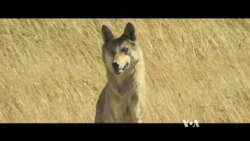Filmmaker Jean-Jacques Annaud wouldn't seem to be the Chinese government's first choice to adapt the story of "Wolf Totem" to the big screen.
He angered Chinese officials with his 1997 film, "Seven Years in Tibet," a biographical drama set in that country just before the Chinese army invaded it in 1950.
But the Oscar winner is also known as one of the best directors of films that feature animal protagonists. He received multiple awards for “The Bear,” the story of an orphaned cub and adult grizzly in British Columbia, and “Two Brothers,” a drama about twin tiger cubs in Cambodia. So Annaud was asked to turn his lens on Lu Jiamin's semiautobiographical novel from 2004 about a young man and a Mongolian wolf.
Lu originally wrote his book anonymously, fearing retribution from the Chinese government for his environmentalist ideas. Today, it's become a best-seller in a more environmentally aware China.
"Wolf Totem" takes place in 1967, during Mao Zedong's Cultural Revolution in China. In that era, urban Chinese students were assigned to educate rural populations, and in the book, the character of Chen Zhen, a student from Beijing, is sent to a remote area of Inner Mongolia. He unexpectedly develops an affinity for the Mongolian grasslands and the herdsmen and falls in love with the Mongolian wolf — an intelligent predatory animal, lethal to the local cattle yet essential to the ecosystem.
When Chen's rescue of a wolf cub is discovered, he faces the ire of the villagers who don’t want such a creature in their midst. Local authorities are purging the predatory herds from the area because they want to develop it. But like the book, Annaud’s movie reveals how the removal of the wolves proves destructive to the Mongolian grassland.
“The region cannot sustain agriculture,” Annaud said. “There is a very thin layer of arable earth, and below is sand. That is why wolves are so important. ‘No wolves’ means too many rats and ground squirrels — they pull out the roots of the grass. ... Too many marmots, too many rats, and there is no more grass left for sheep. Wolves are fundamental on the ecosystem.”
To make the film, Annaud employed expert animal trainer Andrew Simpson. Both spent four years in China raising and training three generations of Mongolian wolves to jump, run and act in front of a camera.
“They are one of the smartest animals we’ve ever worked with,” Simpson said. “They are very intelligent. Biggest thing about a wolf is it relies on its instinct all the time. It’s not a very trusting animal. And it it’s not a very understanding animal or accepting of new situations. You have to give it the confidence and have the animal have the trust in you that you will protect it.”
During the filming, Annaud and Simpson had to choreograph not just the wolves but hundreds of other animals, such as horses and sheep.
But animal training was not the only challenge. The film’s breathtaking cinematography came at a price. Annaud and his crew had to often film in extreme weather conditions.
“I had those people in the middle of winter, in the middle of nowhere, north of China, carrying big fans — to make wind, you know, on mountain slopes," he said. "High altitude, minus 40 [degrees], and they were singing. It was magical."
Despite the challenges, "Wolf Totem" exceeds expectations. The scenes are so stunning, they should be enjoyed in IMAX 3-D. The cast is superb, but the wolves are the stars of the film. One can almost see them thinking.
And China, which banned Annaud’s "Seven Years in Tibet," has now endorsed "Wolf Totem" as its Oscar favorite in the category of Foreign Language Film.






